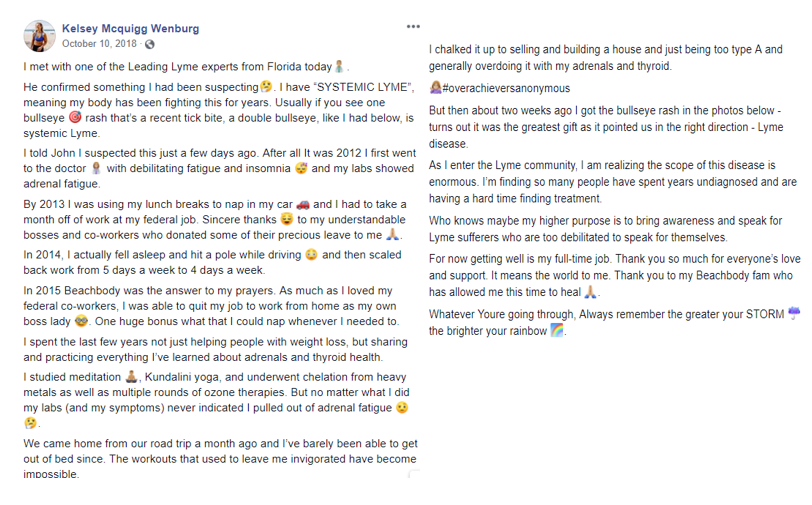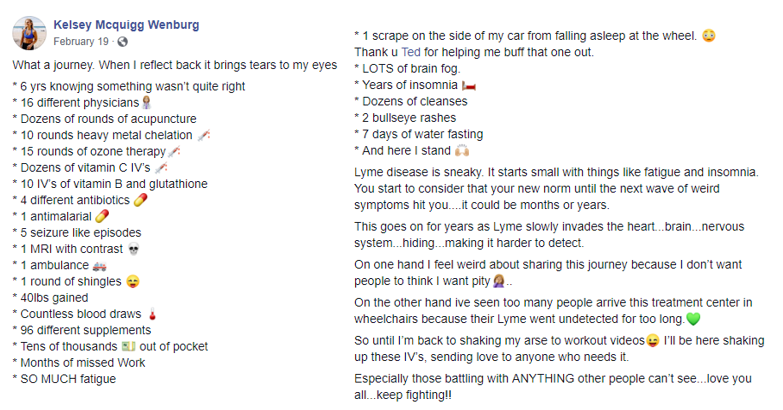Veterans at Work Certificate Program
By Bailey Penrose
Loyalty, Respect, Selfless Service, Integrity, Courage, Excellence, Commitment – These are just some of the core values adopted and embraced by the US Military. Do any of these sound familiar? If they do, you might recognize that these values resonate closely with those espoused by companies like AT&T, General Motors, Chevron, and many others.
While we recognize that US Military veterans and their families are crucial components of our communities, as employers in the civilian workplace we do not always understand how best to welcome and support them. There have been great strides in recent years to help veterans transition into the workplace with tools put in place to help both transitioning veterans and civilian employers. Google has even gotten into the action with their ‘Grow With Google’ program, a job search tool that helps veterans search for civilian jobs based on the roles they performed in the military. However, that does not mean we as employers cannot help in other ways.
A completely free online program, the “Veterans at work Certificate Program”, has been made available to the public at large by the Society for Human Resource Management (SHRM) Foundation with sponsorship by Comcast NBCUniversal. This program is designed primarily for front-line supervisors, hiring managers, and HR professionals that are interested in learning more about how recruit, hire, retain, and engage military veterans and military spouses.
Find out more here:
https://www.shrm.org/foundation/about/Pages/Veterans-at-Work-Certificate-Program.aspx
- Published in Blog
New Independent Contractor Definitions
By Jack Grieco
The Alaska Legislature adopted a number of workers’ compensation reforms in 2018. One reform provides additional tests to determine if a person is an independent contractor or an employee. We are seeing a number of cases where the workers’ compensation auditors have determined a person is an employee because they did not meet these NEW requirements. This could be costly and cost you an additional premium. You could also be required to provide workers’ compensation coverage if someone is injured on your job site and has no other insurance. You could also be sued for negligence if a person is severely injured and has no workers’ compensation coverage. Individual healthcare plans often exclude job related injuries. There is no substitute for workers’ compensation.
Please review these definitions and be sure that your independent contractors are compliant. The best way to avoid having an independent contractor picked up as an employee on your workers’ compensation, to avoid having a claim against your workers’ compensation because of an injury, or to avoid a lawsuit for a third party over claim by a sub-contractor, is to have all sub-contractors provide workers’ compensation for every one of their employees on the job including the owners.
The New Definitions
Workers’ Compensation does not apply to Independent Contractors. A person is an independent contractor for the purposes of this section only if the person:
(A) has an express contract to perform the services; [A written contract, not a PO, is best. It should include insurance requirements for that person/company to have in force and provide additional insured status to you.]
(B) is free from direction and control over the means and manner of providing services, subject only to the right of the individual for whom, or entity for which, the services are provided to specify the desired results, completion schedule, or range of work hours, or to monitor the work for compliance with contract plans and specifications, or federal, state, or municipal law;
(C) incurs most of the expenses for tools, labor, and other operational costs necessary to perform the services, except that materials and equipment may be supplied;
(D) has an opportunity for profit and loss as a result of the services performed for the other individual or entity;
(E) is free to hire and fire employees to help perform the services for the contracted work;
(F) has all business, trade, or professional licenses required by federal, state, or municipal authorities for a business or individual engaging in the same type of services as the person;
(G) follows federal Internal Revenue Service requirements by
(i) obtaining an employer identification number, if required;
(ii) filing business or self-employment tax returns for the previous tax year to report profit or income earned for the same type of services provided under the contract; or
(iii) intending to file business or self-employment tax returns for the current tax year to report profit or income earned for the same type of services provided under the contract if the person’s business was not operating in the previous tax year; and
(H) meets at least two of the following criteria:
(i) the person is responsible for the satisfactory completion of services that the person has contracted to perform and is subject to liability for a failure to complete the contracted work, or maintains liability insurance or other insurance policies necessary to protect the employees, financial interests, and customers of the person’s business;
(ii) the person maintains a business location or a business mailing address separate from the location of the individual for whom, or the entity for which, the services are performed;
(iii) the person provides contracted services for two or more different customers within a 12-month period or engages in any kind of business advertising, solicitation, or other marketing efforts reasonably calculated to obtain new contracts to provide 3 similar services.
Please contact RISQ Consulting if you have any questions about independent contractors, workers’ compensation, or how to craft the insurance requirements section of your company contract. Remember that the best way to avoid potential issues is to have all of your independent contractors provide workers’ compensation for their employees and themselves.
- Published in Blog
I Drive a Spaceship!
By Jennifer Outcelt
Obviously, I don’t actually drive a spaceship. If you thought I really did, then kudos to you for believing that I was capable of space travel and that I spent my life in constant cosmic adventure. In all Earth bound reality, what I mean when I say, “I drive a spaceship” is that I have a new, really cool, really spacy, ergonomic computer trackball mouse.
If you were to tell my 13 year old self that one day I’d be raving on the internet about a clicking device, I’d think I had turned out pretty lame (FACT: I’m not lame at all). What’s really lame is having that tell-tale pain creep down your wrist and into your finger making every click, drag, and drop feel like an Olympic weight lifting event. No, sir, not fun.
After feeling prolonged hand strain, I did a ton of research about Musculoskeletal Disorders and Repetitive Strain Injuries (MSDs and RSIs). I had no idea that MSDs and RSIs were so common or how debilitating they could become. I couldn’t lose my range of hand motion! What if I wanted to pilot a spaceship one day!? So, after more research on better ergonomic practices and products, I landed on my particular mouse as a solution. I’m not here to pimp the brand, but this mouse is amazing. I mean, seriously awesome! Now I am obsessed with my space controller of a mouse that made my hand pain like light in a black hole; nonexistent.
It took about a week to get used to operating my new mouse, and two weeks for the pain to disappear. Now I’m a pro and truly feel like I’m flying a galactic craft. All my coworkers are baffled by my alien mouse technology. I really do enjoy watching them fumble their way through using it to show me something on my computer. If only they knew its power to improve, then maybe they’d have one of their own.
Since this small change has made such a difference in my work comfort, I felt obligated to share with the good people of the internet some of what I learned. Below are some links to websites I read. I encourage you to seek out your own solutions to fix or prevent the inevitable pain that accompanies grueling 9 to 5 computer work. Maybe it’s a better chair? Maybe it’s an exercise? Or, maybe it’s operating your very own space ship…
Please see the below links for more information:
- Published in Blog
Speaking up in Meetings – Why is it so hard?
By Jessica Carlson
As an individual in a professional career, I spend a lot of time in all kinds of meetings, whether they are internal, client, or business partner meetings. Even though I have been in my industry for the majority of my adult life, I still have trouble speaking up in these meetings. I have been this way my entire life. As a student, even if I knew the answer and was confident, I refused to raise my hand. If I finished a test first (and I regularly did), I would wait until at least one or two people turned theirs in to get up and walk to the front of the room. This can all be traced back to my disaffinity for being the center of attention.
If you have been invited to a meeting, it is likely that you are going to be expected to speak up. This is one of the ways that some organizations measure your readiness to be a leader. So, why is it so hard? What causes knowledgeable professionals to freeze up in a meeting environment? I have been researching this question and have come across a variety of factors that contribute to the difficulty.
- Fear of looking stupid. What if you completely forget what you were going to say and freeze up? It is a threat to your credibility as a professional.
- You are unsure of how to articulate yourself. This goes right along with looking stupid. If you cannot put the words together, how will anyone else understand the point you are trying to get across.
- Fear of being judged by your peers. What if they realize you are not as smart as they thought?
- Fear of criticism. What if all they have to offer you is negative feedback?
- Fear that you will not be able to answer their questions.
Most of these fears go hand in hand. If you cannot answer a question, you will probably feel like you look stupid. So, how do you ease the anxiety that is building up?
- Prepare in advance. It is much easier to get your point across if you have had time to research and bring a few bullet points to back it up.
- Speak early in the meeting. It is a lot harder to get a word in if everyone else is already throwing their ideas around.
- Use your strengths. Do you have an area that you are a bit more knowledgeable in? This can be helpful to bring your confidence out if you believe in what you have to say.
- Ask questions. They say there is no such thing as a dumb question so if you need clarity on something that is happening, ask. Your colleagues would much rather you ask them questions than have to go back and start a project all over again.
- And lastly, just take a minute and breathe. This can center you as well as strengthen your voice so you speak with confidence.
The bottom line? If you are scared of something, you are going to avoid it. If you avoid it, you are not going to get any practice. If you do not practice, you are not going to get better. If you are not getting better, you are going to continue to be afraid. This loop of fear does not have to continue if you decide to break the cycle with a few of the approaches listed above.
- Published in Blog
Emotional Intelligence
By Jessica Carlson
Something that has come up quite often over the last several months, while working through some professional development courses, is emotional intelligence. But what exactly is it and how do I know if I’ve got it? Check out the article linked below where they will explain what it is, what the benefits are, and how to develop your own emotional intelligence.
- Published in Blog
I Always Ask a Manager
By Ashley Snodgrass
If you’ve ever had a work problem, where do you turn for help? Maybe you had a dispute with a coworker, or your boss isn’t giving you the feedback you need? My favorite resource for workplace advice is Ask a Manager, a work advice blog written by Alison Green. Ask a Manager is a great resource for anyone engaging in a professional life, whether you’re job hunting and trying to crack the hiring process, or if you are a boss needing advice on how to manage a tricky subordinate. In addition to thoughtful, helpful advice, you will also see plenty of fascinating workplace horror stories!
I’ve gathered a few of my favorite posts below:
Helpful Advice:
Is
It Weird To Have Your Spouse Visit You At Your Office?
Can
You Have Close Work Friendships When You’re In HR?
How Should I Handle Outside Emails About Our Employees That Seem Vindictive?
Do I Wear Too Much Black At Work?
My Employee Is Chronically Late To Work…
Our Employee Says She Is Not Comfortable Having Her Desk Near Men
Why You Shouldn’t Work Off The Clock
Horror Stories:
My Employee Uses A Wheelchair, But I Found Out He Really Doesn’t Need One
Do I Need To Work With The Woman My Father Had An Affair With?
My Dad Is Dating My Boss And They Want Me To Go To Couples Therapy With Them…
My Team Go Matching Tattoos And Other Lack Of Boundaries At My Start Up
My Employer Fined Me $90 For Being Late
My Employee Is Refusing To Travel Because Her Husband Said She Can’t…
- Published in Blog
Lyme Disease- The Great Imitator
By Tonya Mott
Disclaimer: Lyme Disease is extremely complicated, medically and politically. I will do my best to share what I’ve learned and my references. I am nowhere near an expert on the matter, I only wish to bring awareness in hopes of helping others. Please feel free to reach out to me directly if I have misspoken about any information I’m about to share.
Have you ever had someone close to you experience complicated health issues? You’re not the one, and watching what they go through is exhausting. Not only are they dealing with the symptoms of their illness but they are also trying to navigate our complicated health system (providers, caretakers, procedures, insurance, government, legal, etc.). I first experienced this with my Grandma. She suffered from a laundry list of health problems. Then my husband started to experience medical issues, most of which are still undiagnosed and that includes a trip to the Mayo Clinic where he still didn’t get any answers.
Between my Grandma and my Husband, I thought I’d seen it all until my best friend, was recently diagnosed with Lyme Disease. Let’s just say, mind blown. Watching the pain and suffering this has caused her has been heartbreaking.
Here’s how it all began…
We have been best friends since kindergarten (30 years). When I was a kid, Kelsey’s house was my second home. I spent many nights at her house (even on school nights). We’d make homemade pizza, followed by hot chocolate in our jammies, and if we were lucky we’d have a snow day which meant NO SCHOOL!
A few snapshots from our glory days:

Last September, Kelsey had returned from a long road trip and we made plans to meet at her parents and relive the pizza making days.
Instead, I got a text that just about made me fall out of bed. It was this:

The infamous bullseye rash, Kelsey has Lyme disease. My initial research was that if you spot the rash (not everyone is lucky enough to see the rash before it goes away) you most likely caught it early and after a 30-day treatment of antibiotics you’ll be back to normal. I thought, Phew, she’s in the clear she caught it early. I was so wrong…notice in the pic how she has two bullseye rashes. This meant Kelsey has systemic Lyme and most likely has had Lyme for years.
What I thought I knew about Lyme disease prior to Kelsey’s diagnosis:
- Alaska doesn’t have ticks so I don’t have to worry about it
- Avril Lavigne disappeared off the face of the earth and when she resurfaced years later she said she’d been battling Lyme disease
What I know now:
- Alaska has ticks (not saying Kelsey got Lyme from a tick in Alaska, I don’t know where she got Lyme, I’m just saying, Alaska has ticks): Research Tracking Tick Increase in Alaska
- Phases of Lyme in the simplest explanation I’ve found: https://drpompa.com
- The Centers for Disease Control (CDC) estimate that 300,000 people are diagnosed with Lyme disease in the US every year. That’s 1.5 times the number of women diagnosed with breast cancer, and six times the number of people diagnosed with HIV/AIDS each year in the US. However, because diagnosing Lyme can be difficult, many people who actually have Lyme may be misdiagnosed with other conditions. Many experts believe the true number of cases is much higher.
- Lyme is called “The Great Imitator,” its symptoms mimic many other diseases. It can affect any organ of the body, including the brain, nervous system, muscles, joints, and the heart. Patients with Lyme are frequently misdiagnosed. In one article, I read that its symptoms can imitate up to 350 different illnesses. Most specifically mentioned:
- Chronic Fatigue Syndrome
- Fibromyalgia
- Multiple Sclerosis
- Parkinson’s
- Alzheimer’s
- Dementia
- Rheumatoid Arthritis
- Various psychiatric illnesses including depression
- Dr. Dietrich Klinghardt, a leading expert and innovator in Lyme disease treatment for over 30 years, says his practice has never tested anyone with Parkinson’s, ALS, Multiple Sclerosis, or Alzheimer’s that does NOT test positive for Lyme. To quote Dr. Klinghardt: “Lyme Disease is not a bacterial illness; it is an activation of retrovirus caused by the bacterial infection.” Basically, if your DNA has a predisposition to the above mentioned diseases, Lyme may trigger them to become active.
- The Controversy – aka “Lyme Wars”. I’ve found this part hard to summarize but I’ll take a stab at it:
- The CDC, the country’s chief public health agency and the Infectious Diseases Society of America (IDSA) doesn’t acknowledge the existence of Chronic Lyme. The CDC endorses the IDSA’s written guidelines for treating Lyme, which says Lyme disease is hard to get and easy to treat.
- The 14 members of the IDSA that wrote the guidelines around treating Lyme, have several conflicts of interest:
- 6 of 14 Hold patents associated with Lyme
- 4 of 14 Received funding from Lyme test manufacturers
- 4 of 14 Were paid by insurance companies to write guidelines or serve as consultants in legal cases
- 9 of 14 Received money from Lyme vaccine manufacturers.
- Insurance companies have resisted accepting the validity of Long-term Lyme disease. Doctors who disregard the insurance companies and CDC guidelines for treating Lyme, and who prescribe long-term treatment for patients with Lyme, risk being investigated by government agencies and medical boards. Treating a disease that some believe doesn’t exist can lead to losing a medical license or being charged for fraudulent billing.
- The Stigma – “The symptoms are all in your head”, Lyme comes with a host of symptoms and the Centers for Disease (CDC) recommended “Western Blot” test almost always provides a false negative.
False Lyme diagnosis in 1991 Simpsons episode – https://www.youtube.com/watch?v=VjkCj0HJnLs (20 seconds)
I could go on and on about the controversies and conflicts of interest but it would just hijack this entire article.
Below are two updates Kelsey shared on Facebook since her diagnosis. I thought it would be best to share her experience in her own words. What she is going through and how she is coping with the whole situation is remarkable.


To learn more about Lyme Disease, I highly recommend watching these two documentaries (free on Amazon Prime):
- Under our Skin (2009) – Exposes the hidden epidemic of Lyme disease and reveals how our corrupt health care system is failing to address one of the most serious illnesses of our time.
- Under Our Skin 2: Emergence (2015) – This highly-anticipated sequel, investigates the deepening Lyme disease crisis and follows its casualties and controversies. And when we revisit the once gravely ill characters from UNDER OUR SKIN, we see that they have moved from horror to hope, arriving at better health and reclaiming their lives.
After witnessing my Grandma, my husband, and now by best friend experience chronic illnesses, the lesson learned for me, is to be patient and be there for them when they need you. Listen to understand verses respond. DO NOT disregard, doubt, or make them feel bad for their symptoms. This is the time they need you the most. Unfortunately, for me it took my Grandma passing to understand this lesson. I want to cry every time I think about how I treated her. I wasn’t bad to her but I definitely could have been more sympathetic to what she was experiencing. If someone close to you is experiencing complicated medical issues, ask yourself, how are you being there for them? They need your support, trust me, coming from an expert.
Meet Kelsey…
Pre Lyme disease diagnosis. Full-time Beachbody Coach, the most active person I know, promoting wellness, and selflessly helping others with their health goals.

Post Lyme disease diagnosis. Full-time warrior, yet, still managing to selflessly help others fighting chronic health issues.

Resources:
https://underourskin.com/resources
https://www.huffpost.com/entry/the-lyme-wars-meet-the-players_b_58de57b2e4b04ba4a5e252db
https://www.cdc.gov/lyme/index.html
https://drrandybaker.com/author/drrandy18/
- Published in Blog
Copper Theft
By Tim Maudsley
Below is a KTVA article that highlights the spate of commercial copper thefts around Anchorage, fueled mostly by the lure of quick cash. Despite the possibly of great bodily harm, thieves are stealing copper to then sell quickly at local scrap dealers. From an insurance perspective, the theft of copper from a building could be problematic for the policyholder. Most commercial insurance policies contain limitations on coverage for theft related to precious metals, jewelry, gold and related materials. A common coverage limitation is $2,500, and based on the example in the article below, $12,500 of the $15,000 loss may not be covered. It is important for business owners to discuss this limitation with their agent, as coverage exceptions can be made, as well as having the option to increase the limit of coverage for such losses. Finding out about this limitation after a loss is not a recommended risk management approach.
https://www.ktva.com/story/40386853/copper-thefts-test-the-mettle-of-anchorage-businesses
- Published in Blog









